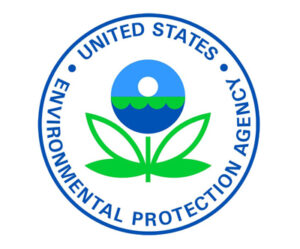The U.S. EPA grants tribal petition to protect salmon from 6PPD
Washington, DC – The U.S. Environmental Protection Agency (EPA) is granting a petition from the Yurok Tribe, the Port Gamble S’Klallam Tribe, and the Puyallup Tribe of Indians to address the use of the chemical N-(1,3-Dimethylbutyl)-N’-phenyl-p-phenylenediamine (6PPD) in tires. The chemical 6PPD has been used in motor vehicle tires for more than six decades to make them more durable. It can also be found in other rubber products such as footwear, synthetic turf infill, and playgrounds.
6PPD reacts with ozone pollution in the air to form a byproduct called 6PPD-quinone, which may be present in stormwater runoff from parking lots and streets due to the presence of tire wear particles. Runoff may be washed into streams and other bodies of water during rain events. As a result, aquatic organisms can be exposed to 6PPD-quinone. Concentrations of 6PPD-quinone in stormwater in the Pacific Northwest were found to be lethal to coho salmon after only a few hours of exposure.
“Today, EPA is responding to our Tribal partners by taking action to protect the coho salmon, which are a key part of the Tribes’ cultural identity and economic security,” said Assistant Administrator for the Office of Chemical Safety and Pollution Prevention Michal Freedhoff. “These salmon and other fish have suffered dramatic decreases in population over the years. Addressing 6PPD-quinone in the environment, and the use of its parent, 6PPD, is one way we can work to reverse this trend.”
In August 2023, the Yurok Tribe, the Port Gamble S’Klallam Tribe, and the Puyallup Tribe of Indians submitted a petition under TSCA Section 21 asking EPA to consider establishing regulations prohibiting the manufacturing, processing, use and distribution of 6PPD in tires.
The EPA is responding by granting this petition. EPA intends to publish an advanced notice of proposed rulemaking under Section 6 of the Toxic Substances Control Act (TSCA) by Fall 2024 in order to gather more information that could be used to inform a subsequent regulatory action.
For example, there are data showing that 6PPD-quinone is toxic to fish, with coho salmon being the most sensitive species studied to date. However, there are still uncertainties about the potential impacts of 6PPD-quinone on human health, as well as the potential for exposure from other sources of 6PPD-quinone.
EPA also plans to finalize a rule under Section 8(d) of TSCA to require manufacturers (including importers) of 6PPD to report lists and copies of unpublished health and safety studies to EPA by the end of 2024.
It was EPA-funded research that first established the link between 6PPD-quinone and salmon deaths in the Puget Sound region in 2020. Since then, EPA has been engaged in ongoing efforts with other federal agencies, states, Tribes, industry, and other stakeholders to address information gaps and address concerns regarding the use of 6PPD and the risks of 6PPD-quinone.
EPA is continuing to fund research activities to expand its understanding of the impacts of 6PPD-quinone, and to fill data gaps. For example, the Office of Research and Development is continuing further investigation of 6PPD-quinone, including work on fate and transport, ecotoxicity, and green infrastructure solutions for stormwater contamination. The Office of Water is currently developing an analytical method for detection of 6PPD-quinone in surface and stormwater and is developing draft screening values for 6PPD-quinone and 6PPD to protect sensitive salmon and other aquatic life. The Agency is also coordinating with the National Science and Technology Council’s Joint Subcommittee on Environment, Innovation and Public Health on potential cross-governmental research on human health effects.

